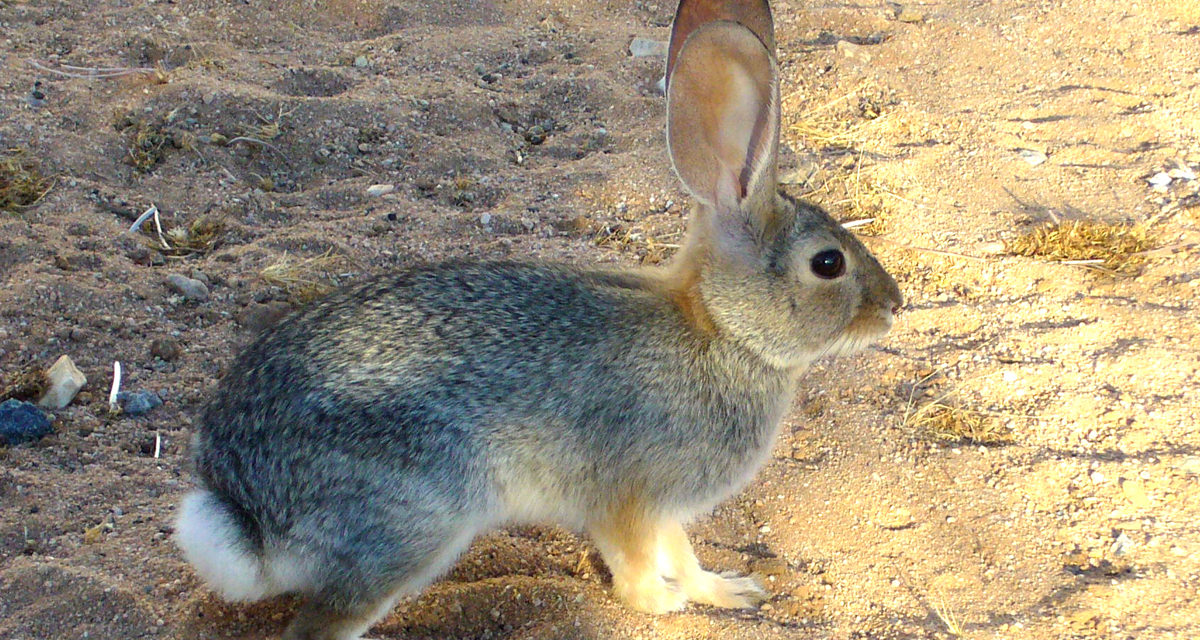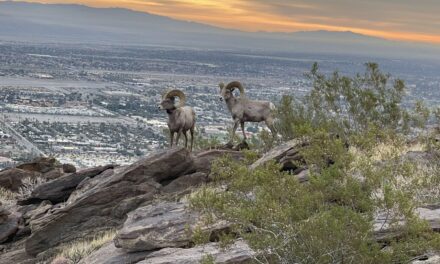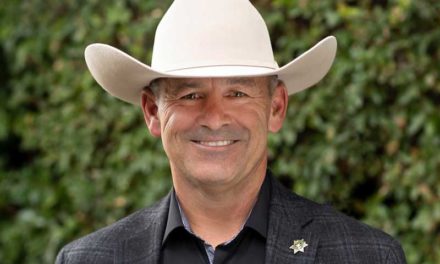Foothills loop defies the eye
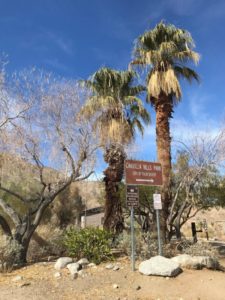
The trailhead for the Gabby Hayes Trail is in Palm Desert’s Cahuilla Hills Park.
The foothills surrounding the Coachella Valley often look like barren wasteland – beautiful certainly, but hardly a place that could support life.
Such is not the case. One easy to reach hiking trail where you can spot wildlife that lives close to valley homes and businesses is Palm Desert’s Gabby Hayes Trail.
The trail runs 1.9 miles when done in a loop with a segment of the Hopalong Cassidy Trail and the full Herb Jeffries Trail. Sporting a 347 feet elevation gain, it’s also a good exercise trail with lots of ups and downs over steep sections.
To read the trailhead, from Calif. Hwy. 111 in Palm Desert, turn south onto El Paseo Drive then right/west onto Painters Path. When the road curves south, it naturally becomes Edgehill Drive. Upon reaching the Cahuilla Hills Park, there’s a parking lot on the road’s right/north side.
The trail begins at the park, accessible from the parking lot’s north side. It heads left/west from the lot. You’re at about 330 feet above sea level.
Next the trail drops into a floodplain for a wash then climbs up the side of a short hill. From there, the trail heads up the side of a ridge.
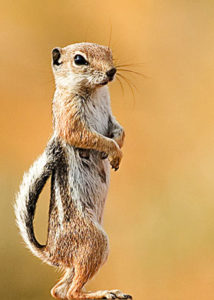
The antelope ground squirrel is a common sight on the Gabby Hayes Trail.
Keep your eye out for various animals or signs that they’ve been on the trail. Among those you might spot are antelope ground squirrel, desert cottontail, Gambel’s quail, the greater roadrunner, Cooper’s hawk, and coyotes.
The antelope ground squirrel looks similar to their forest-dwelling cold climate cousins but with a few differences. They live in burrows rather than trees and also don’t hibernate. They’re a bit smaller – they can reach up to 9.4 inches in length and weigh just 5.5 ounces. Their tail also is flatter and usually features a white stripe.
The desert cottontail also makes its home in burrows. They rarely go far from their homes, as they run at only about 20 mph so need to be able to quick dive into a hole when a predator is nearby. Adult cottontails typically are between 14-17 inches long and weigh between 1.5 to 2.6 pounds.
The trail soon crests an adjoining ridge. Turn around then look southeast, and you’ll be treated to a nice view of Palm Desert from about 23 stories up. You’re at 453 feet elevation.

The Gabby Hayes Trail offers great views of Palm Desert, no matter what time of day.
On the ridge’s other side, the Gabby Hayes ends and junctions with the Hopalong Cassidy Trail at 0.32 miles. Here, you either can turn back for an 0.64-mile round trip hike or go further, making it a loop.
For the loop, go straight-right/south onto the Hopalong Cassidy Trail. It heads along another ridgeline. Among the common desert plants, you can see on the trail are beavertail cactus, brittlebush, creosote and desert lavender.
The trail next goes up and over three minor ridges and their washes. These washes make for great spots to see various animals as the bushes provide cover.
Among them is Gambel’s quail. The plump bird is about the size of a soccer ball and well-camouflaged. Males, however, have a cream-colored belly with black patch. Their calls are a common sound in Southwestern deserts. In spring, males make a kaa sound to signal they’re seeking a mate. When quails notice you, they’ll probably chirp chip-chip-chip, which tells the rest of their covey that something suspicious is nearby.
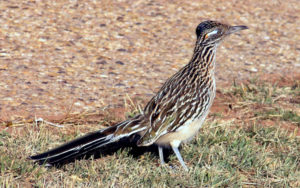
The greater roadrunner often can be spotted darting about in search of prey.
The greater roadrunner often can be seen darting about as well. This small creature can run up to 15 mph – though some have been clocked up to 20 mph – as hunting lizards, rodents and snakes. It also can fly and uses elevated perches to search for prey. Adults usually are 20–24 inches long and weigh between 7.8–19 ounces.
At last, it hits the top of a ridge and stays there as gradually ascending toward the valley floor.
Near the bottom of the ridgeline, you’ll reach a junction. Go left/southeast. At the next footpath, continue straight-left/east. The trail follows a wash to the side of a tennis court.
Two other creatures, like you, also are looking for wildlife – in their case to eat, however.
Among them is the Cooper’s hawk, a common bird in North America. As with other raptors, the female is larger than the male; an adult female measures 17 to 20 inches long with a wingspan of 24 to 39 inches. They make 40 different calls, among the most varied of the raptors. Their diet consists of small mammals and birds as well as lizards and insects.
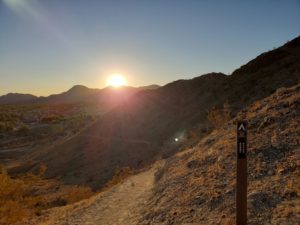
The Gabby Hayes Trail ascends to a ridgeline.
Look down, and you’ll probably spot the track of a coyote somewhere along the trail. The average male weighs 18 to 44 pounds, and the average female 15 to 40 pounds. Highly adaptable, coyotes will eat just about anything, including road kill on nearby highways. They are attracted to human garbage and will eat dog food – as well as pets – left outside in urban areas.
At the tennis courts, go right/south. This is the Herb Jeffries Trail. The trail winds back to the parking lot.
The trail is best done October to April. There’s no shade, so be sure to don sunscreen, sunglasses and a hat. While dogs are not allowed in the Santa Rosa Mountains, they are allowed on the Gabby Hayes Trail, the Homestead Trail, and the segment of the Hopalong Cassidy Trail connecting them.
Image Sources
- Great views in Palm Desert: Rob Bignell
- The greater roadrunner: Rob Biignell
- Desert cottontails: Rob Bignell

